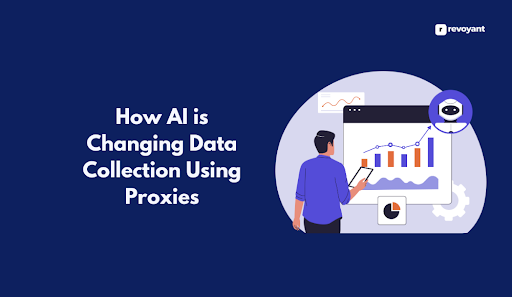AI image editing software has completely changed how we edit and improve images. It uses advanced technology to make the process quicker and smarter, allowing anyone — even beginners — to achieve professional-quality results. These tools are designed to simplify tasks like retouching, background removal, and color correction, making them accessible to everyone, from photographers to social media users.
In this guide, we’ll explore everything you need to know about AI image editing software. You’ll learn about the important features to look for, who typically uses these tools, the benefits, and challenges, as well as alternatives and costs. We’ll also walk you through how to choose the best software for your needs and discuss the latest trends in this fast-growing field.
What is AI Image Editing Software?
AI image editing software uses artificial intelligence to enhance and modify images automatically. It uses advanced technologies like machine learning (ML) and computer vision to handle tasks that traditionally require human skills, such as retouching, object detection, and background removal.
With AI-powered tools, users can quickly improve image quality, apply filters, remove unwanted elements, or change backgrounds with just a few clicks. These tools are designed to simplify the editing process and produce high-quality results, making them useful for professionals and beginners alike.
Why Use AI Image Editing Software?
AI image editing software makes editing easier, faster, and more accessible. Here are a few key reasons why many people and businesses are turning to AI for their image editing needs:
- Saves Time
AI automates tasks like removing backgrounds, retouching portraits, and adjusting colors, which would otherwise take hours to do manually. This allows users to complete projects faster and focus on other important tasks.
- Easy to Use
You don’t need to be an expert to use AI editing tools. They are designed with user-friendly interfaces, making them accessible to beginners while still providing powerful results.
- Consistency
AI ensures that edits are applied consistently across multiple images, which is especially helpful for businesses like e-commerce stores that need uniform product images.
- Cost-Effective
AI editing tools reduce the need for expensive professional services. Businesses can create high-quality images in-house, saving money on hiring graphic designers or photo editors.
- Creative Freedom
By automating technical tasks, AI gives users more time to focus on the creative aspects of their work, experimenting with different styles and effects without worrying about time-consuming edits.
Common Features of AI Image Editing Software
Here are some of the most important features of AI image editing software:
| Feature | Description |
|---|---|
| Automated Retouching | AI tools can automatically detect and correct imperfections in photos, such as blemishes, wrinkles, or uneven lighting. |
| Background Removal | AI-powered background removal lets users isolate subjects from their backgrounds with just one click. |
| Object Recognition and Editing | AI image editing tools can identify specific objects within an image (such as a person, car, or tree) and allow you to adjust only those elements without affecting the entire picture. |
| Style Transfer and Filters | AI software can apply artistic styles or filters to photos, transforming ordinary images into artwork. |
| Color Correction and Enhancement | AI tools automatically adjust colors, contrast, brightness, and shadows to improve the overall quality of the image. |
| Image Upscaling | AI-based image upscaling enhances the resolution of an image without losing quality. |
| Batch Processing | Many AI tools allow you to edit multiple images simultaneously, saving time when applying similar edits to large batches of photos. |
Who Uses AI Image Editing Software?
AI image editing tools are used by a variety of users, each with their own set of needs. Knowing who uses these tools will help you choose the best software for your specific purposes:
| User | How They Use AI Image Editing Software |
|---|---|
| Graphic Designers | Use AI to speed up workflows, improve image quality, and apply creative effects quickly. |
| Photographers | AI helps with color correction, retouching, and background removal, editing large photo batches efficiently. |
| Marketing Teams | Create high-quality visuals for ads and social media by automating tasks like background removal and applying filters. |
| E-commerce Businesses | Ensure consistent, high-quality product photos by removing backgrounds and enhancing details. |
| Social Media Influencers | Enhance photos quickly with filters, retouching, and background changes for polished content. |
| Amateur Users | Access simple, one-click solutions for color correction and basic edits without needing advanced skills. |
Challenges of AI Image Editing Software
While AI image editing software offers many benefits, there are also challenges to consider:
- Limited Customization:
AI tools often rely on preset algorithms, which can limit creative control for users who prefer more manual editing. Advanced users may find that some AI tools don’t offer the flexibility they need.
- Quality Control:
AI might make mistakes in complex images, such as misidentifying objects or over-applying filters. In these cases, human oversight is necessary to ensure quality.
- Learning Curve:
Although many AI tools are designed for ease of use, some users may still face a learning curve, especially if they are unfamiliar with image editing software.
- Cost:
High-end AI image editing tools with advanced features can be expensive, which might be a barrier for small businesses or individual users.
- Integration Issues:
Not all AI image editing software integrates smoothly with other design or editing tools. Users may need to adjust their workflows to accommodate the new software.
Alternatives to AI Image Editing Software
While AI image editing tools offer powerful solutions, some alternatives may suit certain users better:
Traditional Image Editing Software:
Programs like Adobe Photoshop or GIMP offer more manual control over editing and are preferred by users who need full creative control over their images.
Outsourcing Image Editing:
For businesses that lack the time or expertise to handle image editing in-house, outsourcing to a professional editor or agency remains a viable option. This ensures high-quality results but can be more expensive.
Stock Photography:
In some cases, using stock photos instead of editing your own images can save time and money, especially when high-quality visuals are needed quickly.
Costs of AI Image Editing Software
The cost of AI image editing software can vary widely depending on the features, subscription plans, and the scale of your editing needs. Here are some common pricing models:
| Pricing Model | Description |
|---|---|
| Subscription-Based | Monthly or yearly plans with basic features. Premium plans offer advanced tools like batch processing. |
| Pay-Per-Use | Pay based on the number of images edited or tools used, good for occasional edits. |
| Enterprise Solutions | Custom pricing for large companies needing advanced features and bulk editing. |
| Freemium | Free versions with limited features, suitable for individuals or small businesses. |
How to Buy the Right AI Image Editing Software
Here are some practical steps to help you choose the best AI image editing software:
1. Define Your Needs:
Determine what tasks you need the AI tool to handle. Understanding your specific needs will help narrow down your options.
2. Evaluate Features:
List the features you absolutely need. Do you need basic tools like color correction, or more advanced features like image upscaling or style filters? Pick software that matches your goals.
3. Test the Software:
Many software providers offer free trials or demos. Use these to see if the software is easy to use and fits your needs before you make a final decision.
4. Check Compatibility:
Ensure that the AI software integrates with your existing tools, such as design software or content management systems. This will help streamline your workflow.
5. Consider Scalability:
If your image editing needs are likely to grow, choose software that can grow with your business. Look for tools that offer upgrades as your needs increase.
6. Look at Customer Support:
Pick a vendor that offers good customer support, like tutorials, live chat, or user forums. This way, you’ll have help if you run into any issues or need advice.
Future of AI in Image Editing
The future of AI in image editing looks promising as the technology continues to evolve. Here are some trends to watch for:
AI for Real-Time Editing:
More AI tools are enabling real-time edits, where users can see changes instantly as they make adjustments. This reduces the need for manual edits and saves time.
AI in Video Editing:
AI is expanding into video editing, allowing users to apply the same automatic enhancements, background removal, and object detection to video content. This is expected to be a game-changer for content creators and businesses.
Ethical AI Editing:
As AI becomes more advanced, there’s a growing focus on ethical concerns, especially when it comes to retouching portraits or altering images in ways that could mislead viewers. Future AI tools are likely to include built-in guidelines to ensure ethical editing practices.
Deeper Integration with Design Tools:
AI tools are increasingly being integrated with other design and creative software, making them even more accessible for users who work across multiple platforms.
Conclusion
Choosing the right AI image editing software means knowing what you need and finding features that fit your goals. By looking at the software’s tools, trying out demos, and thinking about things like cost and how well it can grow with you, you can pick a solution that makes editing easier. Whether you’re a professional photographer, a graphic designer, or just getting started, AI image editing software can save you time, improve your work, and give you new creative options.




